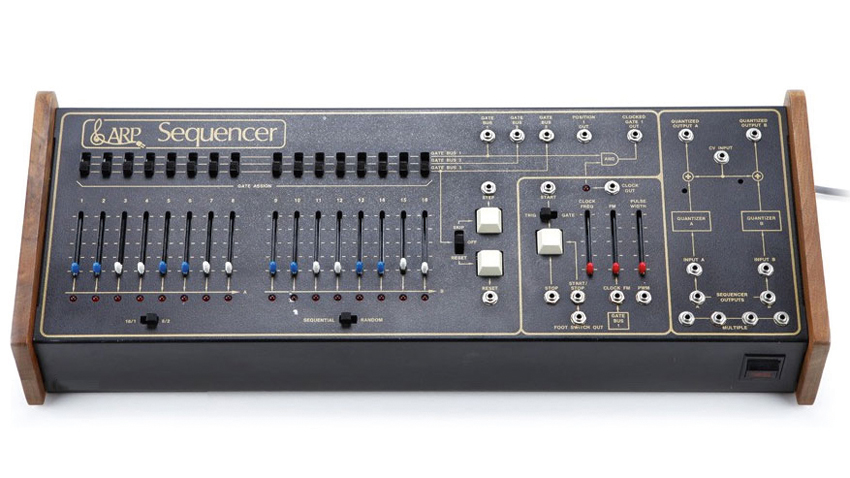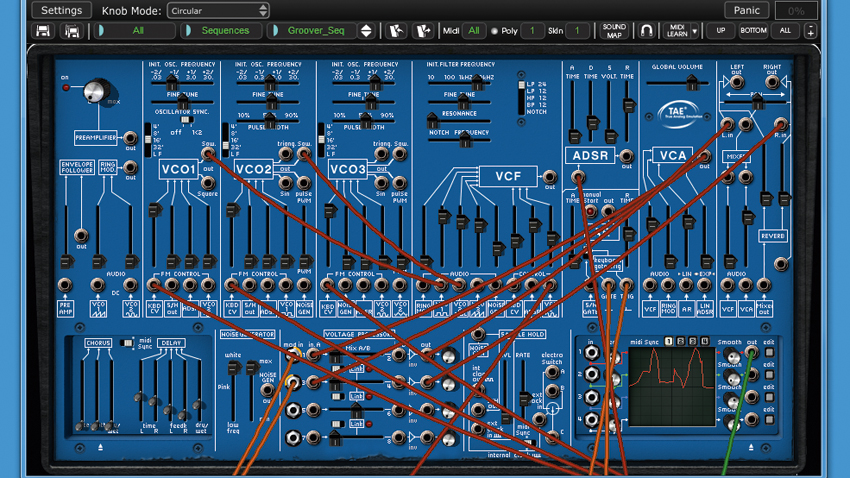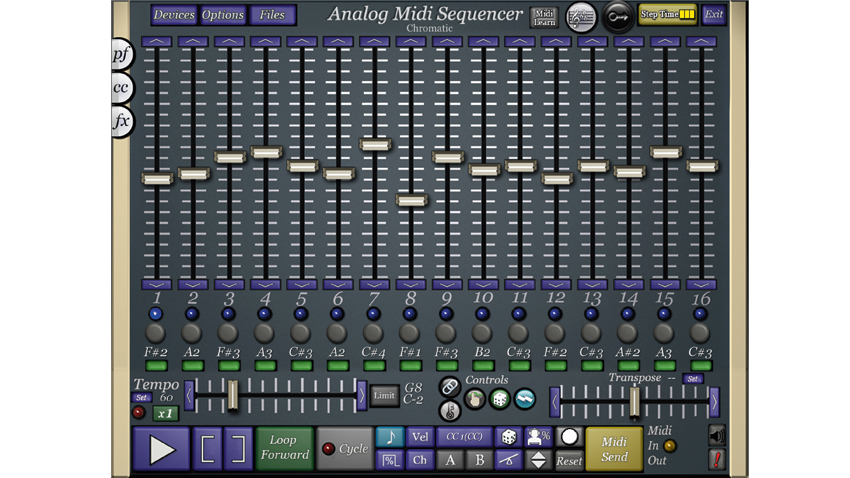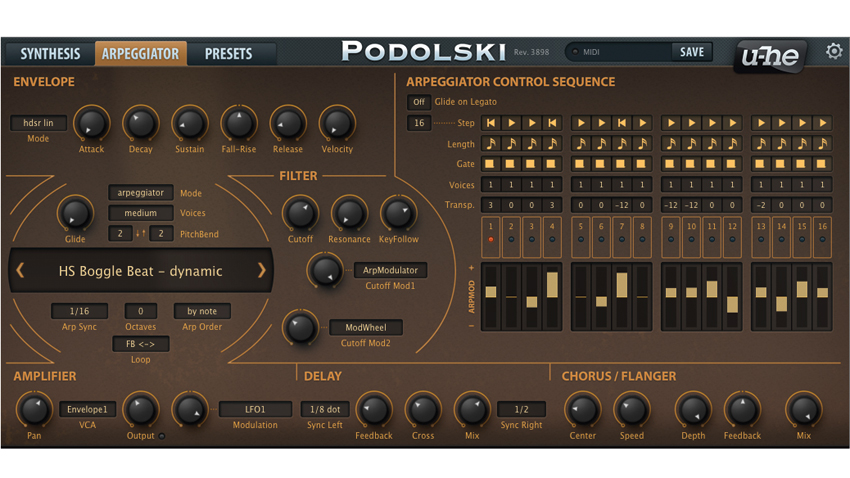Blast from the past: ARP Sequencer
The final word in analogue sequencing, ARP’s 1600-series Sequencer was a pulsating parameter-packed powerhouse and a powerful musical partner

In the initial analogue era, sequencers were just what the word implied - a means by which a short sequence of events could be generated. Those events were, in fact, merely voltages that could be used to control pitch, fire off triggers, or even other sequencers.
ARP’s standalone Sequencer (model numbers 1601, 1613, 1623) module was a jam-packed tabletop affair adorned with two sets of eight vertical sliders. A single pattern of up to 16 steps could be played back, or it could be made to generate two simultaneous eight-step patterns. An ingenious gate bussing system allowed each step to be shuttled to any of three busses using the 16 three-position switches above each slider. Internal and external control over start, stop, clock frequency and pulse width were possible via sliders and input jacks. A random mode was available as well.
Without a doubt, the very best features of the ARP Sequencer were its dual quantised outputs. Most analogue sequencers required that the user painstakingly dial each step of the sequence into the desired pitch - a tedious and time-consuming prospect, and an often futile one at that, as the unstable oscillators to which the sequencer was attached might have drifted in the time it took to create a complete sequence! ARP’s quantisation circuitry snapped voltages to the nearest relative note - assuming your oscillators were properly scaled and tuned, of course. This made the ARP Sequencer a brilliant compositional tool, as the user could easily experiment with slider positions, throwing them around until something sounded good, secure in the knowledge that the results would conform to a chromatic scale.
This made the ARP Sequencer a brilliant compositional tool, as the user could easily experiment with slider positions, throwing them around until something sounded good, secure in the knowledge that the results would conform to a chromatic scale.
It should be noted, though, that the ARP Sequencer was not limited to quantised voltages - it offered all sorts of additional patch points - all using the 1/8" jacks found on the company’s legendary 2600 synthesiser. Also similar to the 2600 is the inclusion of a quartet of patch points soldered together to form a ‘multiple’ that could be used as a junction for combining voltages.
ARP’s contentious relationship with Moog was demonstrated by the fact that the gate and trigger outputs would not actually work with the S-trig inputs found on Moog’s instruments without a bit of DIY intervention. Users of Oberheim, Roland and, eventually, Sequential Circuits instruments would find the ARP Sequencer to be a perfectly acquiescent companion.
And many musicians did just that. High profile users include The Who, John Carpenter, Vince Clarke, Steve Roach and Jean-Michel Jarre.
ARP’s sequencer was a product of its time. Loaded with then-modern features, it was nevertheless an analogue device and as such, quite limited by today’s standards. Sequencers like this one were all but forgotten as more capable digital sequencers like Roland’s MC-4 and other microprocessor-based options hit the scene. Yet, as with all thing analogue, the ARP Sequencer has recently seen a resurgence in popularity with secondhand prices soaring well beyond the device’s actual worth. Fortunately, modern users who’d like a taste need not look far, with both hardware and software clones available, as well as a legion of sequencers that were inspired by the ARP.
Get the MusicRadar Newsletter
Want all the hottest music and gear news, reviews, deals, features and more, direct to your inbox? Sign up here.
Three great ARP Sequencer alternatives

Arturia 2600V
Needless to say, many ARP Sequencers were bought by owners of ARP synthesisers looking to expand their instruments’ capabilities. As such, it was often paired with the company’s semimodular 2600. Arturia know this and their bang-on emulation of the legendary 2600 comes with an equally spot-on copy of the 1601 Sequencer.
FULL REVIEW: Arturia 2600V

Anthony Saunders midiSequencer
This slider-laden affair is available both commercially and in a free ‘Lite’ incarnation. 16 sliders offer quantised access to the pitch of each step for a faux ARP experience, with more advanced features (ratcheting, swing and mordents) on offer as well. Use it to sequence external hardware or iOS synths.
READ MORE: Anthony Saunders midiSequencer

u-he Podolski
This one combines a synth with a 16-step sequencer. The engine is based on a single oscillator, a filter, an envelope and a couple of LFOs. It’s essentially a cut-down version of the developer’s Filterscape VA, with an advanced slider-based arpeggiator. Though not intended to ape the ARP, it can provide the same sort of improvisational action!
DOWNLOAD FOR FREE: u-he Podolski


Computer Music magazine is the world’s best selling publication dedicated solely to making great music with your Mac or PC computer. Each issue it brings its lucky readers the best in cutting-edge tutorials, need-to-know, expert software reviews and even all the tools you actually need to make great music today, courtesy of our legendary CM Plugin Suite.
“Excels at unique modulated timbres, atonal drones and microtonal sequences that reinvent themselves each time you dare to touch the synth”: Soma Laboratories Lyra-4 review
“I’m looking forward to breaking it in on stage”: Mustard will be headlining at Coachella tonight with a very exclusive Native Instruments Maschine MK3, and there’s custom yellow Kontrol S49 MIDI keyboard, too










